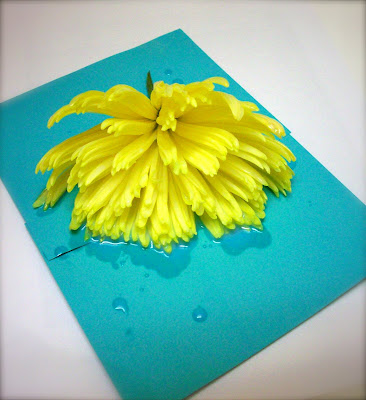My mom actually found this 4"x6" photo of a painting when cleaning out some of the treasures of my great aunt's small estate:
Italian painter/architect Giotto's rendition of Italian poet Dante. It seems to be a painting, or excerpt of a painting (?) from the very famous Bargello Palace in Florence, Italy.
So in reality, I hold a photo of a print, OR a blurry photo of the original (just printed poorly). That's the actual print quality, (look at the frame compared to the figure). If you keep reading, this train of thought gets better.

Now: it's kind of cool I guess, but maybe only for a few seconds. Really I have no recollection of this piece from any of my art history classes, probably because I was paying attention to better looking things. But the best part is on the back: Rome, 1928.

"Rome 1928", in the cutest most delicate pencil ever. I think the writing looks familiar, but who would really know. At least it tripled my interest level. In modern day, anyone can stick anything in a frame, and most anyone can print from the internet or purchase a shiny tiny print at a museum. But now we are forced to think about the art-print business of the 1920s (that I don't know anything about) or who in my family may have gone to Rome, or who cared enough to buy this little print in Rome- or even in the States (in Baltimore most likely) and so on. Did they sneak a photo in the Bargello Palace? That means they had a camera. That means they took a big trip. Now I have a good mystery, courtesy of this weird little Dante. Coming soon, some awesome-creepy photos of saint statues looking like real people, found in my aunt's boat house.
So just for the sake of sharing, here is a master copy I did three years back to date. Both of the Lucas Cranachs (younger and elder) worked in the mid 1500s, Giotto was 2 centuries before.
8"x10" Oil on Gesso Board. Copy of Lucas Cranach's "Madonna and Child with Piece of Bread".
HOWEVER: I am having terrible trouble finding out if this is the real title, or if this is even a copy of a Cranach at all, and if so is it the Elder or Younger? All I had to go by was the collection of Renaissance images that my professor had provided. He's [obviously] very credible, but if anyone has any helpful facts, send them my way! Thanks.






 Not quite complete pandas:
Not quite complete pandas:


 No stranger to pandies. They also eat for about 14 hours a day. Side note, one of the books I'm using is called Animal Life Cycles, every page has a detailed illustration of every animal mating, from hedgehogs to hyenas. It's actually all the same.
No stranger to pandies. They also eat for about 14 hours a day. Side note, one of the books I'm using is called Animal Life Cycles, every page has a detailed illustration of every animal mating, from hedgehogs to hyenas. It's actually all the same.


















 "I AM ART for a hooker buy me" - 2010
"I AM ART for a hooker buy me" - 2010
























